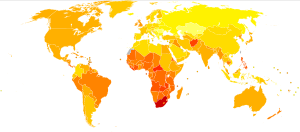
Every year, thousands of people die in the from asthma attacks
Every year, thousands of people die in the U.S. from asthma attacks, even though they are using good medications and have it under control. And here in New Orleans, the number of people who have asthma is significantly higher.
But now there’s a breakthrough in technology that is helping the most severe adult cases.
Schelly Gillen, 40, never had asthma or any breathing problems as a child. But after her first baby in her 30’s, she began coughing.
“It progressively got worse to where it was uncomfortable socially. I noticed I kind of didn’t want to go to parties and stuff because people would go, ‘Are you okay?’ Because I was coughing all the time,” remembers Gillen.
Cleaning up in the aftermath of Hurricane Katrina, symptoms became extremely bad. She was diagnosed with asthma.
“I was on steroids, inhalers, asthma medications, and nothing seemed to really stop it. It continued to get progressively worse. It affected every aspect of my quality of life. I couldn’t sleep. My family couldn’t sleep. I coughed 24-7,” said Gillen.
Then she heard about new technology for severe asthma. The treatment hadn’t come to Louisiana yet, so Gillen traveled from her home in Slidell, Louisiana to Virginia to have Bronchial Thermoplasty.
“There’s a population of patients that just you do everything with the medications and they can still continue to have symptoms. They still continue to have to use their rescue inhaler once a day, maybe several times a day. They still continue to wake up at night or they have severe exacerbations that may even require the use of corticosteroids or hospitalization,” said Dr. Richard Tejedor, an assistant professor of medicine at LSU Health Sciences Center and a critical care pulmonologist at Ochsner in Kenner.
Dr. Tejedor is now the only doctor in the region performing Bronchial Thermoplasty at Ochsner in Kenner.
Here’s how it works: The airways in healthy people are always open. But people with asthma have a thicker smooth muscle lining. Combine that with inflammation and an asthma trigger in the environment, and the smooth muscle contracts making the airways narrow.
That makes it hard to breath.
During this new procedure while the patient is sedated, a flexible tube goes through the mouth or nose, and down into the airways. There is light and a camera at the tip so doctors can see inside the lungs on a TV monitor.
Wire electrodes then come out of the tube, and as the pulmonologist and respiratory therapist activate the system, a 10-second burst of radio frequency energy heats and reduces the thickened airway smooth muscle.
This helps to keep airways from constricting as much during an asthma attack. Tiny sections are done one at a time. The airways are treated in three different procedures about a month apart, so each section can heal in between.
“The studies show a significant reduction in severe asthma episodes, hospitalization and lost days from work so that they can resume a more normal lifestyle. And for some patients, it’s quite dramatic,” said Dr. Tejedor.
Immediately after the treatments patients will feel worse, but then they get better and usually need fewer medications. Gillen, who had the procedure in December 2010, said she felt no pain and her medications work better now.
Read more . . .
Bookmark this page for “asthma” and check back regularly as these articles update on a very frequent basis. The view is set to “news”. Try clicking on “video” and “2” for more articles.








